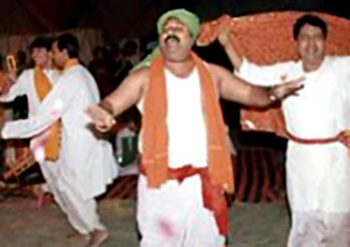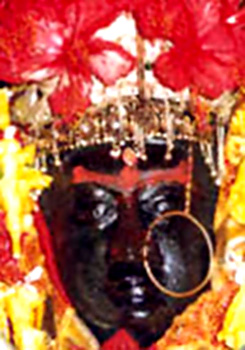 Culture of Chatra District is a reflection of the various colourful fairs, festivals, arts, crafts, traditional and cultural values of the people. There is no specific and recognized language used in this district of Jharkhand. Generally spoken dialects are Magahi, Nagpuri, Khortha. But these dialects are also not in a pure from; rather in a mixed form. Generally people of Chatra District understand, speak and write Hindi language and Urdu language. Tribal population in Chatra District is not very significant but they use Sadri or Nubndari (tribal language) among themselves. Chatra District has been a seat of religious acceptance from time immemorial. It is mainly famous for `Shakti` cult. The noted seat of this cult is to be found in Hunterganj and Itkhori blocks. Further, throughout the year various festivals and fairs are organized in the district.
Culture of Chatra District is a reflection of the various colourful fairs, festivals, arts, crafts, traditional and cultural values of the people. There is no specific and recognized language used in this district of Jharkhand. Generally spoken dialects are Magahi, Nagpuri, Khortha. But these dialects are also not in a pure from; rather in a mixed form. Generally people of Chatra District understand, speak and write Hindi language and Urdu language. Tribal population in Chatra District is not very significant but they use Sadri or Nubndari (tribal language) among themselves. Chatra District has been a seat of religious acceptance from time immemorial. It is mainly famous for `Shakti` cult. The noted seat of this cult is to be found in Hunterganj and Itkhori blocks. Further, throughout the year various festivals and fairs are organized in the district.
Some of the popular fairs of the district are as follows -
Kunda Mela in Pratappur: This mela is held at the time of Falgun Shivaratri and is marked by a big sale of cattle.
Kolhua Mela in Hunterganj: It is an ancient fair held twice in a year during Magha Vasant Panchami and Chaitra Ram Navami respectively. There is a beautiful lake and ancient temple of Goddess Kali on the top of the hill. Its origin is not known. It is only a religious fair.
 Chatra Mela: This mela is said to have started from 1882 and is principally a cattle fair held during Durga Puja.
Chatra Mela: This mela is said to have started from 1882 and is principally a cattle fair held during Durga Puja.
Kundri Mela in Chatra: The probable year of its origin is 1930 and is held on Kartik Purnima and is principally cattle fair.
Kolhaiya Mela in Chatra: The probable year of its origin is 1925. It is held on Magha Vasant Panchami and is principally cattle fair.
Tutilawa Mela in Simaria: The probable year of origin is 1935 and is principally a cattle fair held on Falgun Purnima.
Lawalong Mela: The probable year of its origin is 1880. It is held at the time of Aghan Purnima and is one of the biggest cattle fair of this district.
Belgada Mela in Simaria: The probable year of its origin is 1920 and this is also cattle fair held in Baisakh Purnima.
Bhadli Mela in Itkhori: There is an ancient temple of Goddess Kali and Lord Shiva. It is considered as a religious gathering on Makar Sankranti.
Sangharo Mela in Chatra: It is held in Sawan Purnima. The origin of this fair is not known.
People of Chatra District have strong religious beliefs. Temple of Bhadrakali, Kauleshwari Devi Temple and Royal Mosque located in this region give a foretaste of the inherited beliefs prevalent in the region. Important festivals celebrated in the district are Holi, Diwali, Dussehra and Ramnavami. Other festivals like, Vasant panchami, Chath puja, Jityya Bhaiya Duj, etc. are also celebrated in this district. Important festivals of Muslim communities are Id-Ul-Fitr, Baqrid, Muharram, Shabe-barat. Specific festivals of the tribes are Karma, Manda, Sarhul, Jani shikar, etc. In Karma festival non tribal communities also participate.
Folk music is popular in the rural areas of Chatra District and is usually presented on important festivals, marriages and other occasions. Particularly the tribal dances are rhythmic. All these give a glimpse of the vibrant culture of Chatra District.






